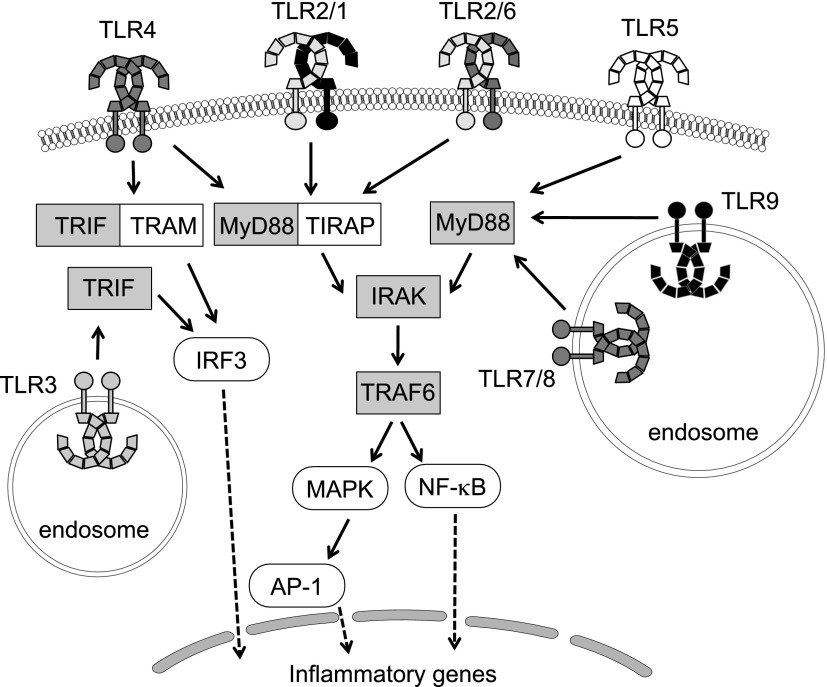Fig. 3.
Toll-like receptors, adapter proteins, and signaling molecules. With the exception of TLR3, all TLRs recruit the adapter protein, myeloid differentiation primary response gene 88 (MyD88). In addition, TLRs 1, 2, 4, and 6 recruit the adapters cluster of differentiation 14 (CD14, not shown), which is required for lipopolysaccharide (LPS) binding, and Toll-Interleukin 1 receptor domain containing adaptor protein (TIRAP), which links the conserved C-terminal intracellular Toll/interleukin-1 receptor (TIR) domain with MyD88. In the MyD88-dependent pathway, the MyD88 recruits interleukin 1 receptor-associated kinase (IRAK), which interacts with the adapter protein tumor necrosis factor-receptor-associated factor 6 (TRAF6) and provides a link to nuclear factor kappa-light-chain-enhancer of activated B cells (NF-κB) translocation. The MyD88-dependent pathway also facilitates expression of mitogen-activated protein kinase (MAPK) and transcription factors, such as interferon regulatory factors (IRFs), driving the production of proinflammatory mediators, including cytokines and chemokines. Activation of TLR3 initiates the TIR-domain-containing adapter-inducing interferon-β (TRIF)-dependent pathway, whereas TLR4 can signal via either MyD88-dependent or TRIF-dependent pathways requiring the additional linker adaptor TRIF-related adaptor molecule (TRAM) to associate with TRIF. In the TRIF-dependent pathway, TRIF interacts with TRAF3 to activate IRF3 initiating IFN-β production, which is the hallmark of the host innate response to viral infection.

